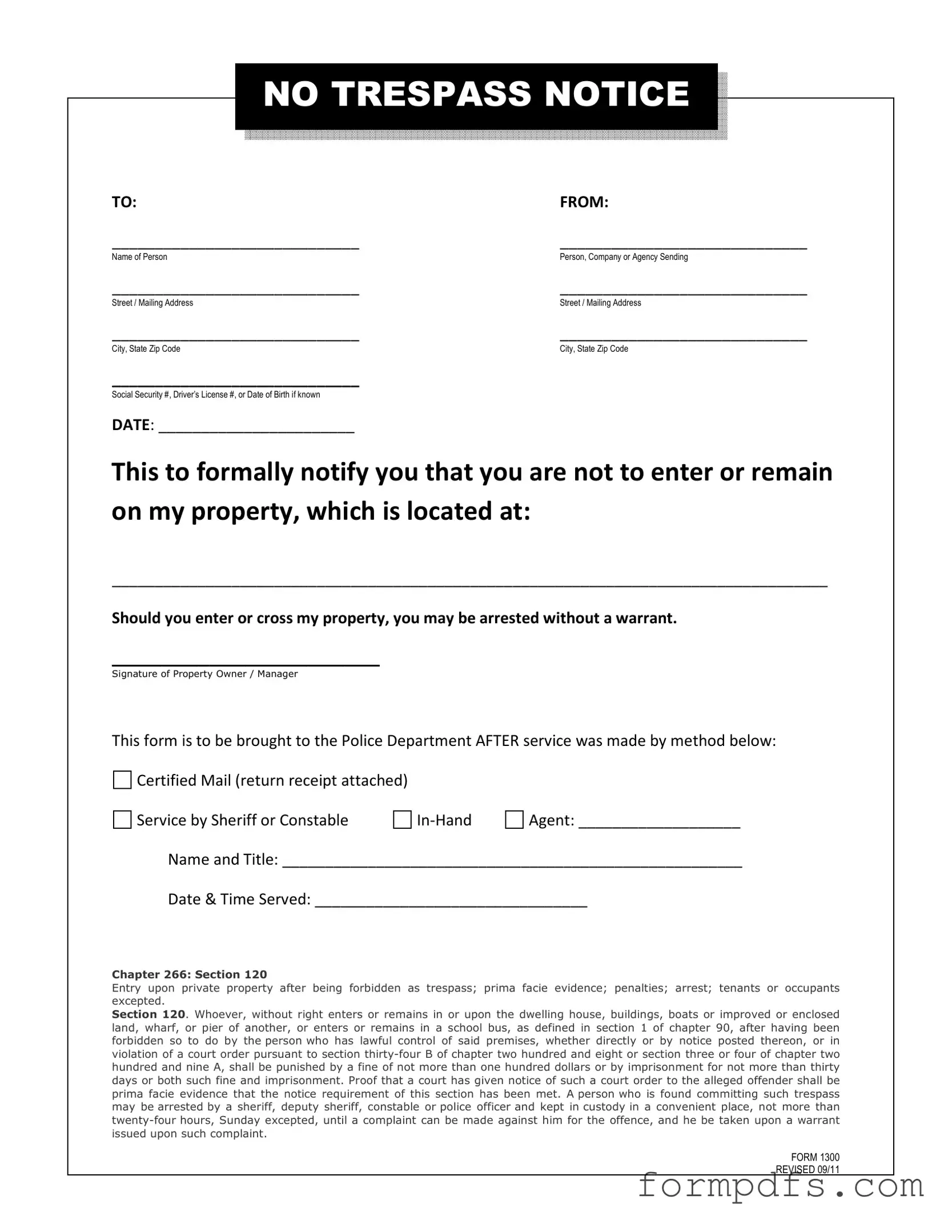What is a No Trespassing Letter?
A No Trespassing Letter is a formal document that informs individuals they are not allowed to enter or remain on a specific property. It serves as a clear communication of the property owner's intent and establishes legal grounds for preventing unauthorized access. By delivering this letter, property owners can protect their rights and ensure that trespassers understand the consequences of their actions.
How should I deliver a No Trespassing Letter?
There are several acceptable methods for delivering a No Trespassing Letter. The most effective ways include sending it via certified mail with a return receipt requested, or serving it in person through a sheriff or constable. If you choose to deliver it in person, make sure to document the date and time of service, as well as the name and title of the person who served the letter. This information can be crucial if further legal action becomes necessary.
What happens if someone ignores the No Trespassing Letter?
If an individual ignores the No Trespassing Letter and enters your property, they may be subject to arrest without a warrant. The letter acts as a legal warning, and failure to comply can lead to criminal charges for trespassing. It is important to keep a copy of the letter and any evidence of the individual's presence on your property for potential legal proceedings.
Can I use a No Trespassing Letter for any type of property?
Yes, a No Trespassing Letter can be used for various types of property, including residential, commercial, and vacant land. Regardless of the property type, it is essential to clearly define the boundaries and specify that entry is prohibited. This clarity helps to reinforce your rights as a property owner and provides a solid foundation for any future legal action.
Is a No Trespassing Letter legally binding?
While a No Trespassing Letter itself is not a legal document that guarantees immediate legal action, it does establish your intent to prohibit access to your property. If the letter is properly delivered and the recipient continues to trespass, it can be used as evidence in court. This can support your case if you decide to pursue legal action against the trespasser.
Do I need an attorney to create a No Trespassing Letter?
No, you do not necessarily need an attorney to create a No Trespassing Letter. Many templates are available online that can guide you in drafting an effective letter. However, consulting with a legal professional can provide additional peace of mind, ensuring that your letter meets all legal requirements and adequately protects your rights as a property owner.
